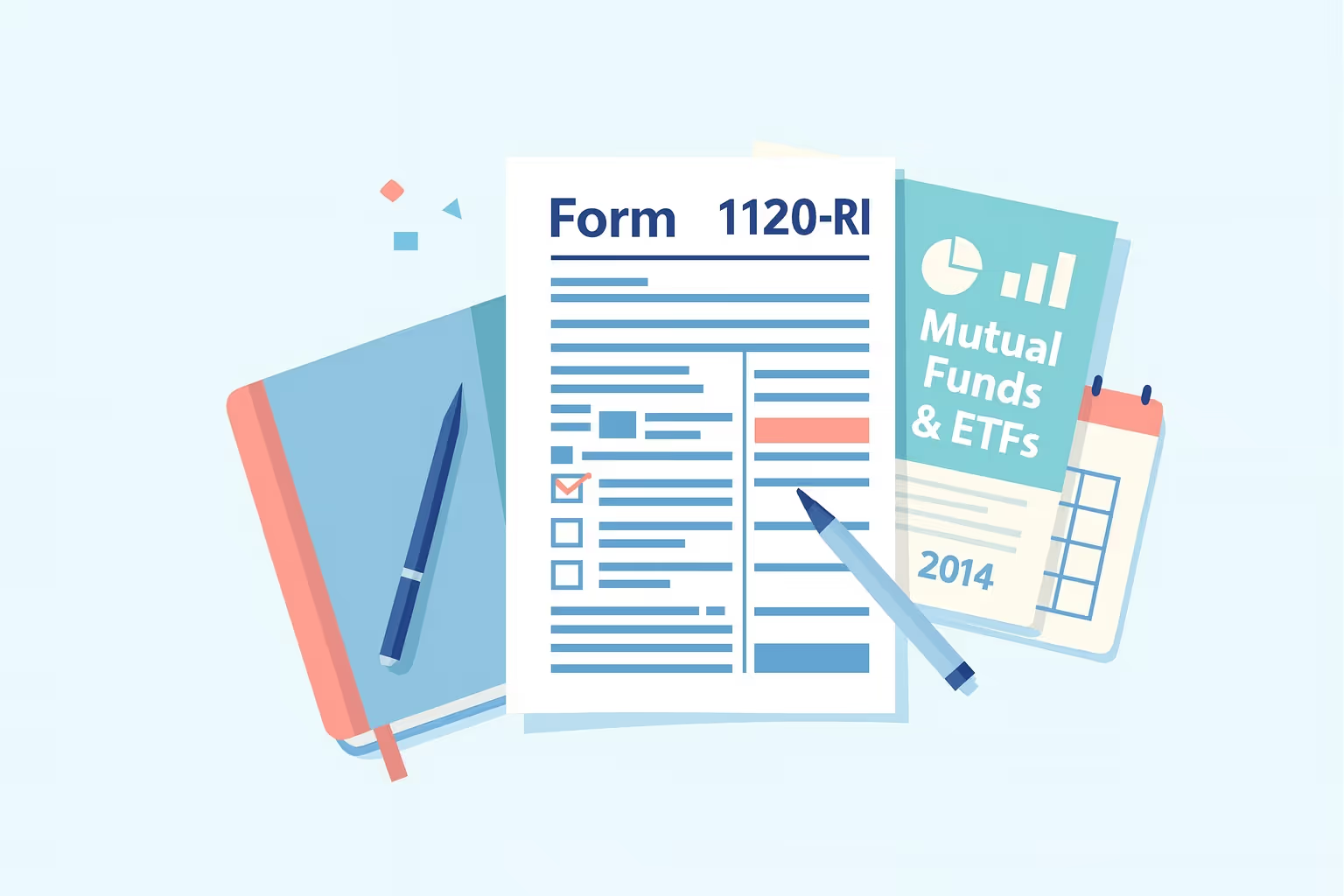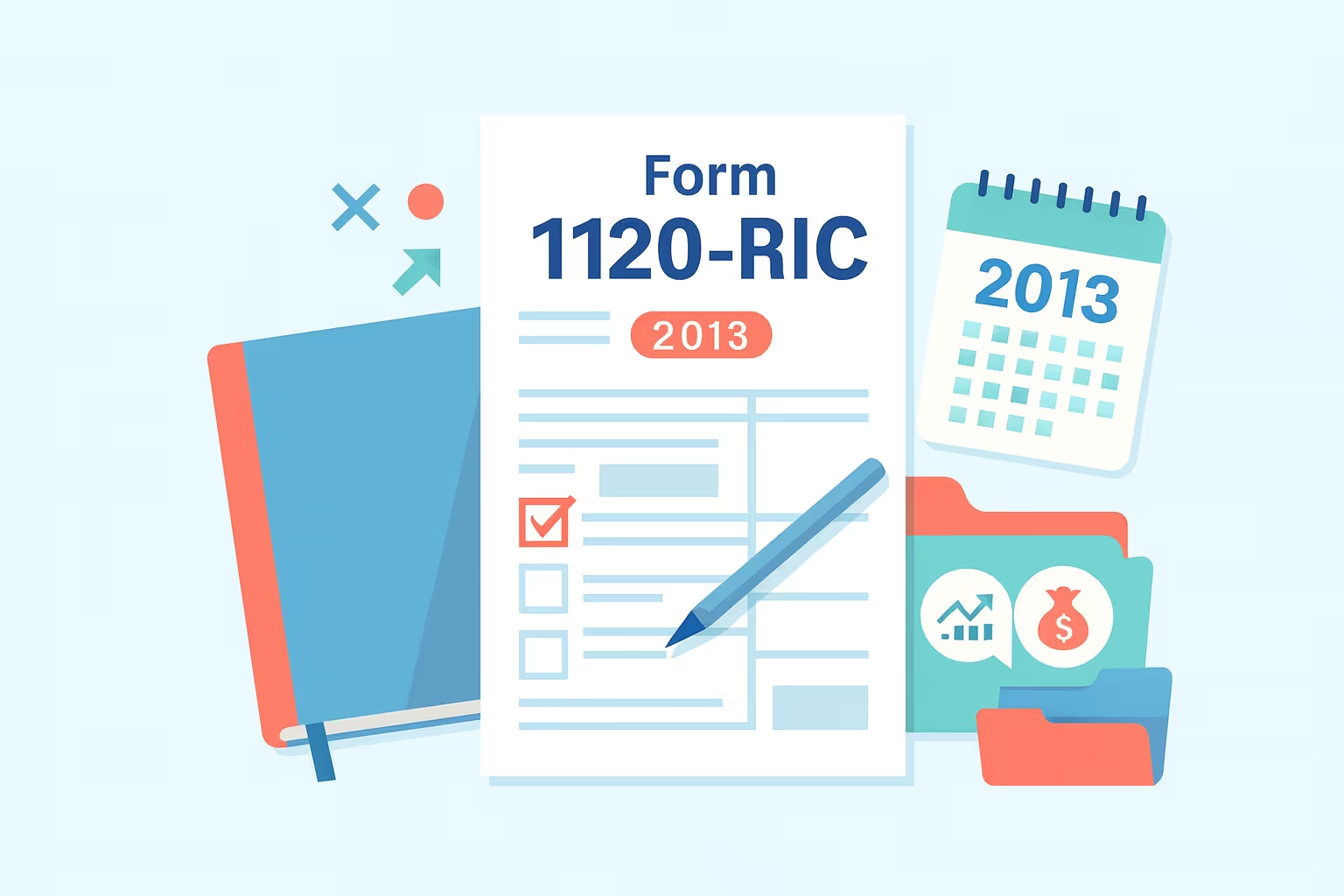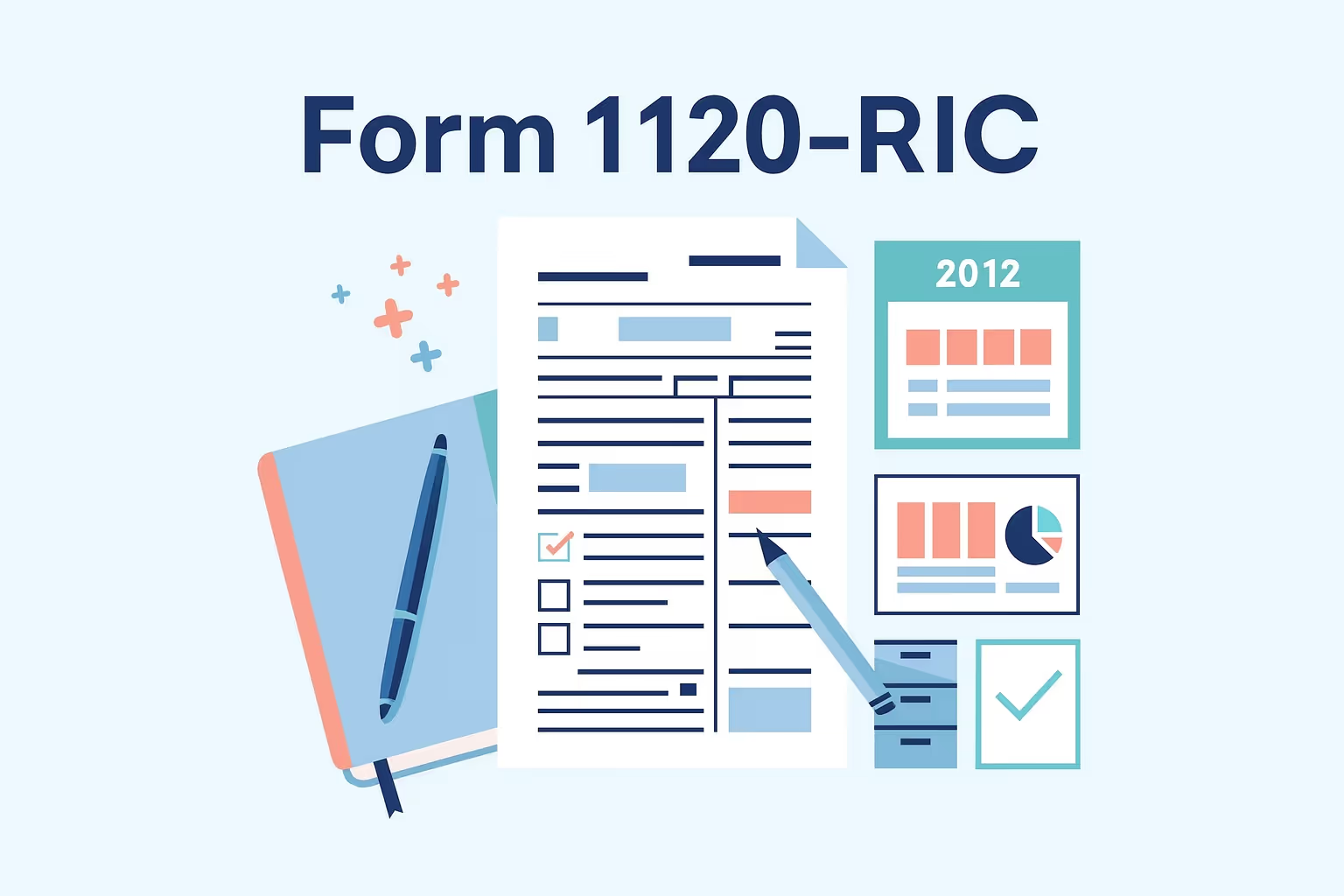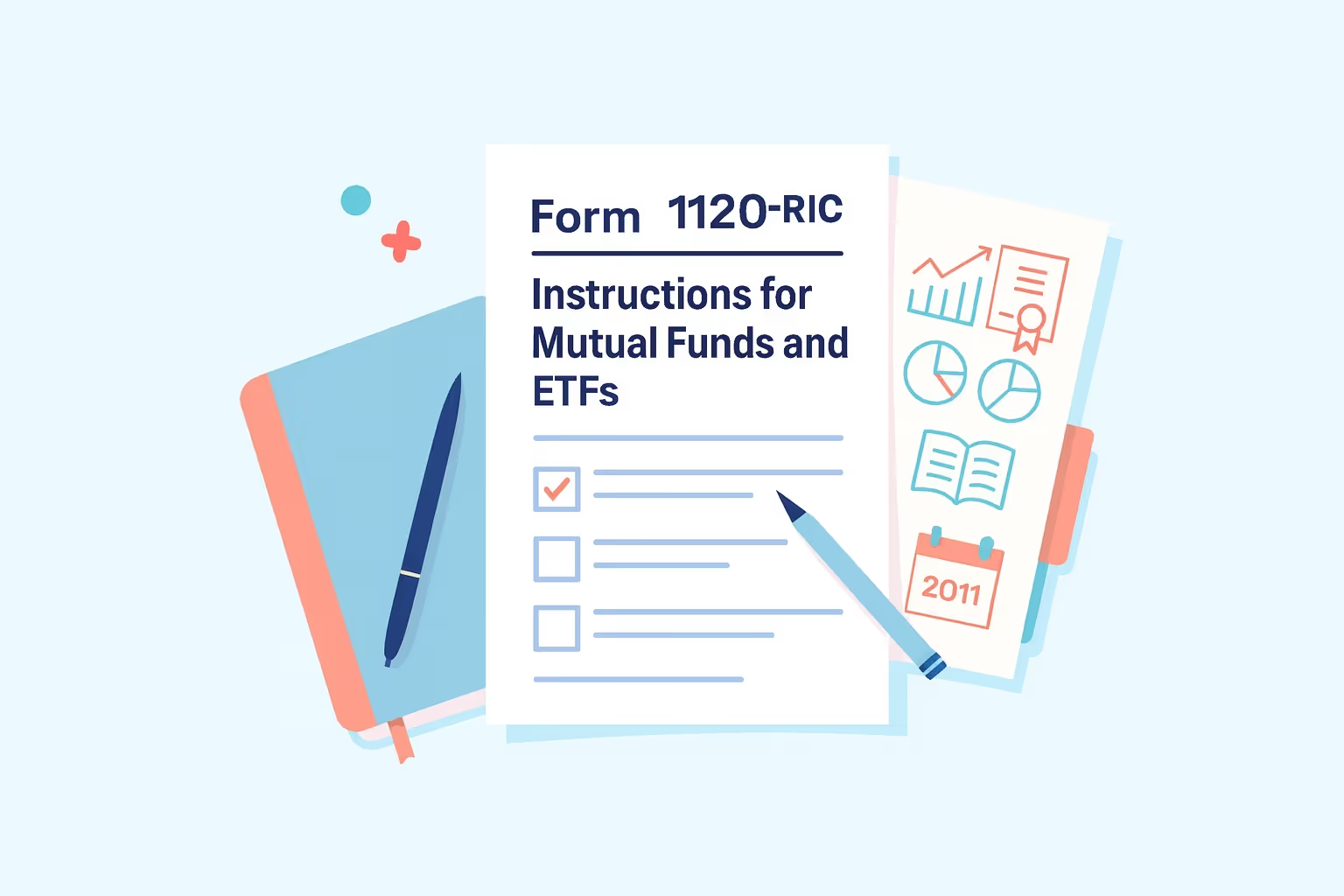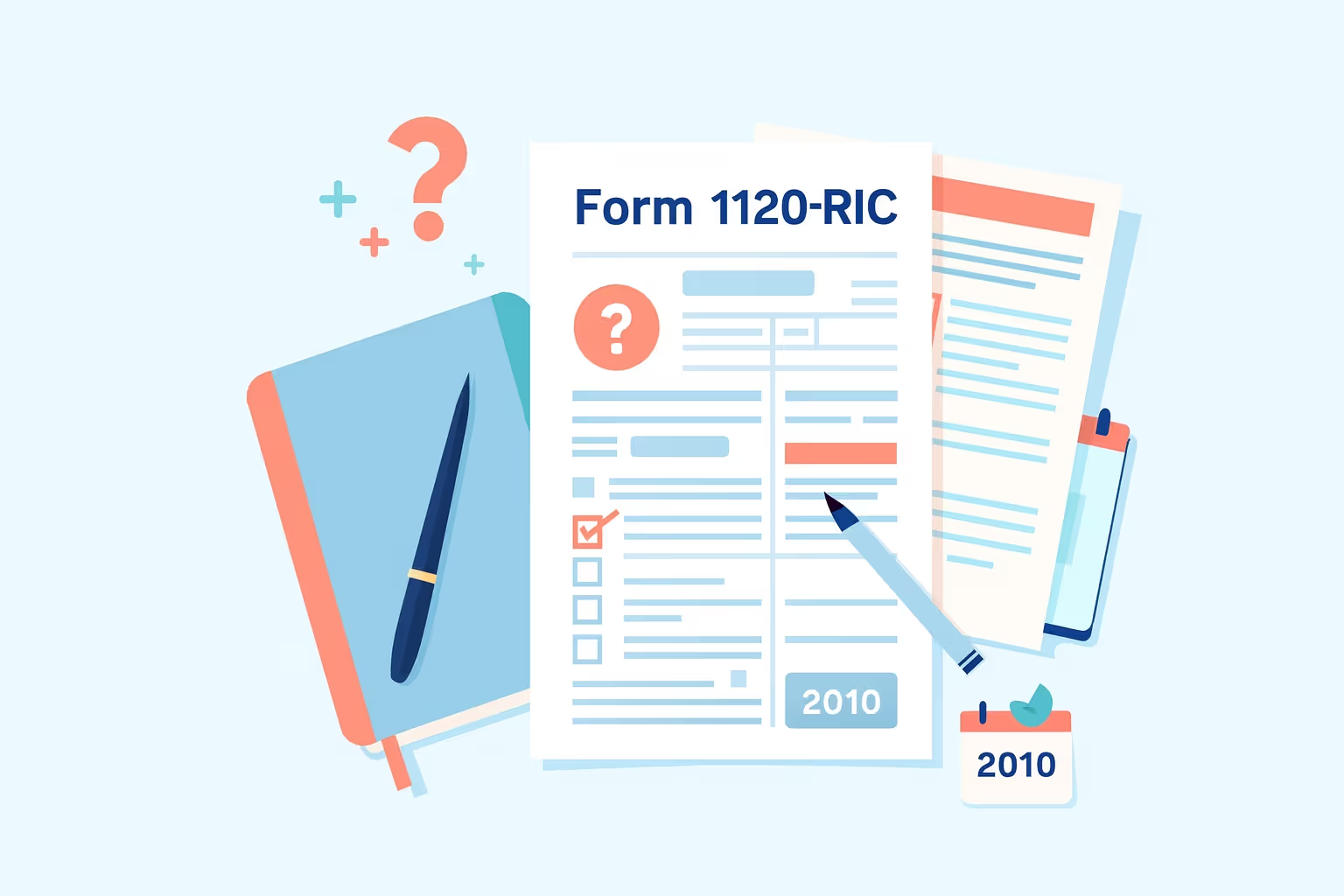
What IRS Form 1120-RIC (2024) Is For
IRS Form 1120-RIC (2024) is the U.S. Income Tax Return used by regulated investment companies to report income, deductions, gains, and credits. It determines the income tax liability of a regulated investment company under the Internal Revenue Code. Domestic corporations qualifying under Section 851 must file this form to maintain RIC status and meet income and asset diversification tests. Entities such as mutual funds, exchange-traded funds, and unit investment trusts use it to report investment company taxable income, net investment income, and dividends paid. The Internal Revenue Service requires compliance with tax law and regulations issued by the Securities and Exchange Commission.
For a detailed breakdown of filing requirements, eligibility rules, and step-by-step instructions, see our guide on How to File Federal Form 1120-RIC for Tax Year 2024
When You’d Use Form 1120-RIC for 2024 (Late or Amended Filing)
A regulated investment company files its income tax return by the 15th day of the fourth month after its tax year ends, or the 15th day of the third month for June 30 fiscal years. Late or amended filings occur when corporations discover reporting errors, omit capital gains, or miscalculate the dividends received deduction. They may amend if new deductions, other income, or excise tax adjustments apply. Each filing must follow Internal Revenue Service instructions and accurately reflect corrections under applicable tax law.
Key Rules for 2024
- Regulated investment companies must distribute at least 90% of their taxable and tax-exempt income to maintain RIC status.
- According to IRS instructions, the minimum late filing penalty is the smaller of the total tax owed or $510.
- Corporations filing ten or more returns must electronically file their corporation’s return with the Internal Revenue Service.
- Losing the RIC qualification subjects the domestic corporation to standard corporate income tax until it requalifies.
- Estimated tax payments are required through EFTPS when the total tax exceeds $500 for the current year.
- All gross income, including dividends, capital gains, and securities loans, must be reported under federal tax law.
- Attach Schedule D and other forms to reconcile total assets, deductions, and taxable income.
Step-by-Step (High Level)
Step 1: Gather Transcripts and Records
Collect all investment and distribution records, past corporate tax returns, and current financial statements. Obtain IRS transcripts online or by phone to confirm reported income and payments.
Step 2: Complete the Correct-Year Form
Use the official 2024 Form 1120-RIC. Include the employer identification number, income, deductions, dividends paid, and estimated tax payments. Ensure all applicable fields are complete.
Step 3: Attach Required Schedules
Attach Schedule N, Schedule D, Form 8949, and other forms alphabetically or numerically. These schedules show gross income, capital gains, deductions, and adjustments for the Internal Revenue Service.
Step 4: File Electronically or Mail
File electronically if required, or mail the return to the IRS center based on the business location and total assets. Always verify the latest address and instructions.
Step 5: Keep Copies and Pay Taxes
Keep copies of the corporation’s return, supporting forms, and payment confirmations. Pay any balance due using EFTPS and retain records for audits or future amended returns.
Learn more about federal tax filing through our IRS Form Help Center
Common Mistakes and How to Avoid Them
- A corporation that miscalculates the 90% distribution rule may lose RIC status and become subject to corporate income tax on all taxable income. To avoid this, verify distribution calculations using the definitions in Section 561 before filing.
- If the investment company does not file Form 8613 for the excise tax on undistributed income, it will fail to comply and face penalties. To prevent this, file Form 8613 annually on a calendar-year basis when required under section 4982.
- The corporation risks disqualification if it does not monitor asset diversification and properly document quarterly compliance. To avoid this, review and record quarterly diversification ratios under section 851(b)(3) to stay compliant.
- The Internal Revenue Service may delay processing if amended filings lack complete explanations for each change. To avoid delays, attach detailed statements identifying line adjustments and reasons for amendment.
- A corporation may face return rejection if it ignores e-filing requirements and fails to confirm its electronic filing obligations. Verify e-file eligibility and system readiness before the due date to prevent issues.
- The filing process experiences delays when a taxpayer uses outdated IRS forms or omits required attachments. To ensure timely processing, always download the latest Form 1120-RIC and related schedules from the IRS website before submission.
What Happens After You File
After filing, the Internal Revenue Service reviews the corporation’s return for accuracy and completeness. Simple returns are processed within weeks, while complex ones may take longer. If discrepancies appear, the IRS may issue notices requesting clarification or payment. Corporations may request payment plans or penalty relief when justified by reasonable cause. Refunds and credits are applied to the corporation after processing is complete.
FAQs
What is the late penalty for filing an IRS Form 1120-RIC (2024): RIC Tax Return?
The Internal Revenue Service charges 5% of unpaid tax per month, up to 25%. For returns over 60 days late, the minimum penalty is the smaller of the tax due or $510.
How do I report estimated tax payments on my corporation income tax return?
Report all estimated tax payments made through EFTPS. As the Internal Revenue Code outlines, proper reporting ensures that credits apply to your total tax liability.
What counts as gross income for a regulated investment company?
Gross income includes dividends, interest, capital gains, and securities lending income. All income must be reported and calculated according to federal tax law and IRS instructions.
How does an investment company report net investment income?
Net investment income equals total company taxable income minus allowable deductions and expenses. This figure determines the RIC’s income tax liability under IRS tax law.
What if I have other income from securities loans or short-term investments?
Report other income, such as securities loans or trading profits, on the appropriate lines. Attach schedules to support figures reported on the corporation’s return.
Where do I list the employer identification number on Form 1120-RIC?
Place the employer identification number on every page of the form and schedules. This ensures the Internal Revenue Service can accurately match all related filings.
How do I file Form 1120-RIC U.S. for a final return, or when should I include other forms?
For a final return, check the “Final Return” box. Attach all applicable schedules and forms properly before filing, including Forms 8613 or 8949.
For more resources on filing or understanding prior-year IRS forms, visit IRS Form 1120-RIC: Regulated Investment Company Tax Return Guide.

























